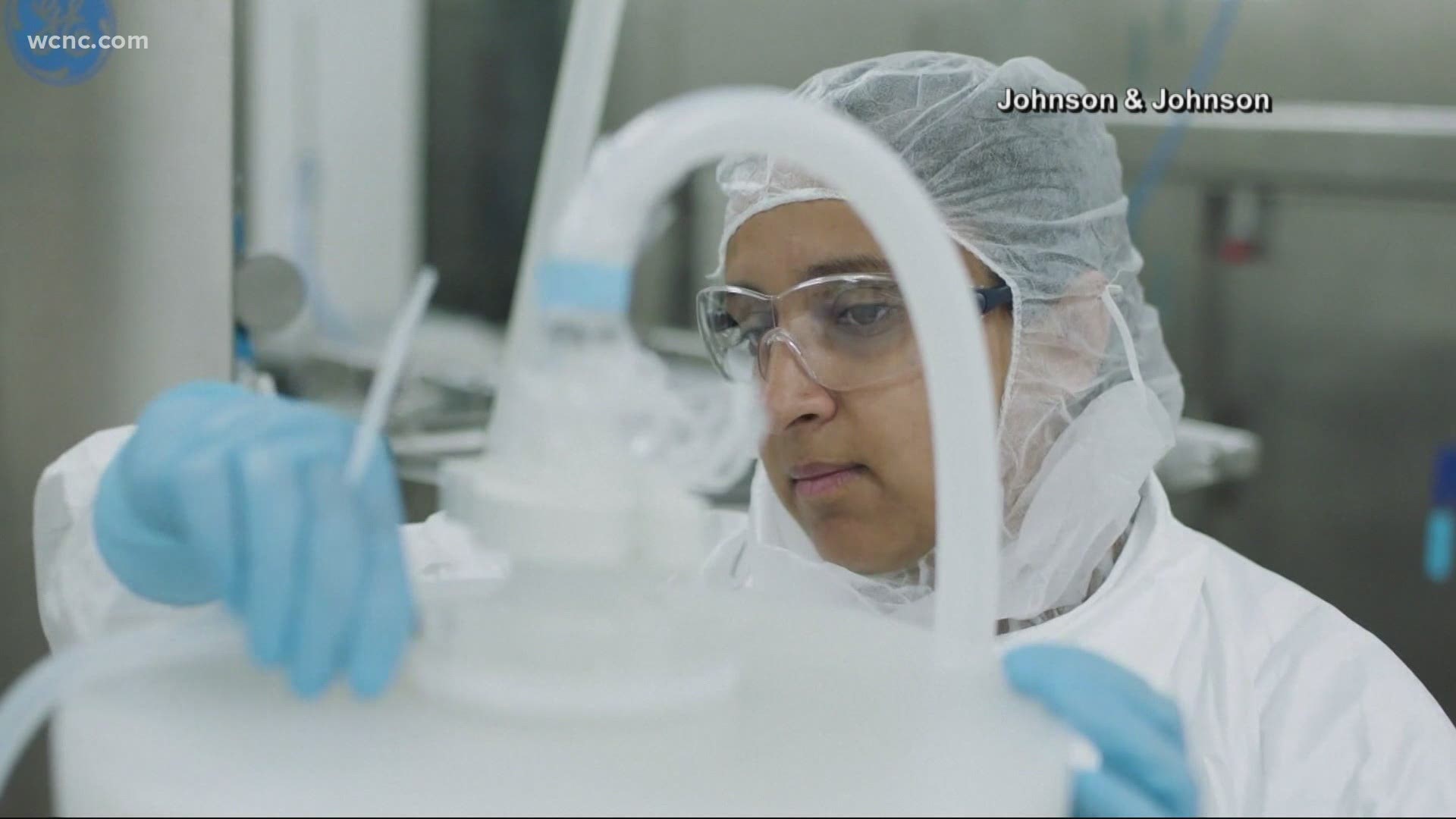CHARLOTTE, N.C. — The United States is now getting a third COVID-19 vaccine. Johnson & Johnson's shot got the final stamp of approval from the Food and Drug Administration Saturday, after getting the green light from the agency's independent panel Friday.
With the vaccine likely rolling out in the coming days, thousands of North and South Carolinians could soon be getting a COVID-19 vaccine with lower efficacy than the other vaccines already on the market.
But how much does that matter?
FDA briefing documents show Pfizer and Moderna are both roughly 95% effective at preventing symptomatic COVID-19. For Johnson and Johnson, that rate is 66% when it comes to preventing moderate to severe/critical symptoms.
That rate was mostly dampened by the portion of the research conducted in South Africa, where a coronavirus variant was already prevalent. With that variant's presence in the U.S. still less established, U.S. efficacy was 72%.
Johnson and Johnson's candidate is about 85% effective in stopping severe or critical cases of the virus.
Infectious disease experts think those rates are impressive, but even if they were lower, it would not be the full measure of the vaccine's worth.
"It's not just how effective a vaccine is. It's how many people get it," Dr. David Priest, an infectious disease specialist with Novant Health, said.
Priest said a good example of that is the annual flu shot.
"The flu vaccine every year, maybe, is 40% effective, but if every eligible person got it, we'd have almost no flu mortality," Priest said.
In fact, Centers for Disease Control and Prevention data shows the last several years of flu shots mostly had efficacy under 50%, with one season even as low at 10%.
However, the CDC estimates lower efficacy flu vaccines still prevented thousands of deaths.
For example, the 2014-2015 flu season had a flu shot with 19% efficacy. The CDC estimates vaccinations that season still prevented nearly 1.5 million cases, more than 740,000 medical visits or hospitalizations, and almost 4,000 deaths.
"If we had a vaccine that was 25% effective that everyone got, it would be really good at preventing disease and mortality, versus a vaccine that's 95% effective that only 10% of people get," Priest said.
Also, when considering the efficacy data, Dr. Katie Passaretti, an infectious disease specialist with Atrium Health, notes it is important to consider what the ultimate goal of vaccination is.
"The Johnson & Johnson vaccine data does show some milder cases of infection, but again, that isn't really as important as protecting against the more severe consequences of infection," Passaretti said.
Johnson and Johnson said it can ship out nearly 4 million doses of the vaccine upon emergency use authorization. North Carolina state health officials have been tentatively planning for 30,000 to 60,000 doses from that immediate shipment. South Carolina officials are expecting 40,000 doses.

